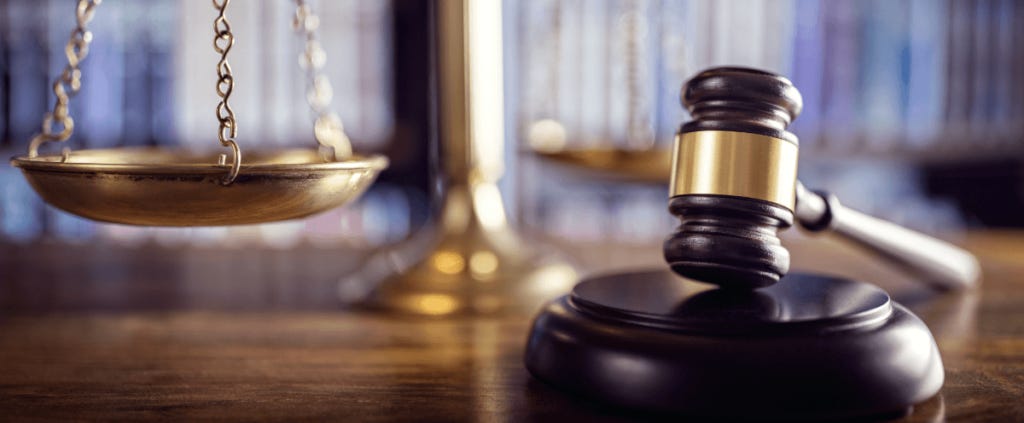First AI Training Ruling Finds No Fair Use
'None of Ross’s possible defenses holds water'
We now have our first court ruling to address directly the issue of AI training, copyright, and fair use. And it’s…well, a bit of a muddle.
The case was filed in federal district court in Delaware in 2023 by Thomson Reuters against AI startup Ross Intelligence. In it, Thomson accused Ross of making unlicensed use of copyrighted case summaries by the Thomson-owned Westlaw legal research service to train Ross’ own legal research service. Ross raised the usual fair use defense, which judge Stephanos Bibas explicitly rejected in granting Thomson Reuters’ motion for summary judgment.
Creators and rights owners will no doubt cheer the result. First rulings can often be important in setting a tone for similar later cases. And with more than three dozen AI and copyright cases still pending in U.S. courts, having the first decision go the way of the copyright-owner plaintiffs can only be heartening to other plaintiffs.
Alas, the fact pattern and circumstances in the Thomson Reuters case are not as clear cut as might be hoped for in a case of first impression.
Ross’ use of Westlaw’s copyrighted summaries was indirect. It first approached Westlaw to license its content for AI training but was rejected. It then turned to LegalEase to act as a cut out. LegalEase hired lawyers to prepare Bulk Memos summarizing cases and instructed them on how to create the memos using Westlaw’s summaries. Ross then used the Bulk Memos — many of which contained verbatim or near-verbatim copies of Westlaw summaries — to train its AI. Judge Bibas nonetheless found Ross liable for direct copyright infringement.
Another unusual wrinkle in Bibas’ ruling is that it reversed is own prior ruling rejecting summary judgment, after having “studied the case materials more closely and realiz[ing] that my prior summary-judgment ruling had not gone far enough.”
That odd reversal, and the fact that the ruling comes at the summary judgment stage before trial, would ordinarily make it ripe for appeal. But with Ross having gone out of business under the weight of the litigation costs, it is not clear whether it could or would pursue that course.
Then there is Judge Bibas’ 23-page opinion itself. It reads as much like an account of a personal intellectual odyssey as a legal document, making free use of the first-person pronoun “I” rather than the more judicially common “we,” or “this court.” It even opens with a sort of aphoristic mea culpa.
A smart man knows when he is right; a wise man knows when he is wrong. Wisdom does not always find me, so I try to embrace it when it does––even if it comes late, as it did here.
Other courts may have trouble determining how to interpret or apply Judge Bibas’ personal epiphany to other sets of facts.
As for the question of fair use, Bibas reaches a split decision on the four statutory factors, two favoring Ross and two favoring Thomson Reuters.
Following the U.S. Supreme Court’s 2023 ruling in Andy Wharhol Foundation v Goldsmith, however, he finds the fourth factor — in this case the Ross tool’s potential market substitution for Westlaw’s service — as the most dispositive, giving it greater weight than the others and tipping the 2-2 balance toward the plaintiff.
He also rejects Ross’ claims of innocent infringement, copyright misuse, merger, and scenes à faire,
The biggest problem other courts will face in applying Judge Bibas’ ruling, however, is that Ross’ AI product is not a generative model, setting it apart from most of the other copyright infringement cases brought against AI companies. As Bibas himself writes, “Ross took [Westlaw’s] headnotes to make it easier to develop a competing legal research tool. So Ross’s use is not transformative. Because the AI landscape is changing rapidly, I note for readers that only non-generative AI is before me today.”
That makes the Thomson Reuters case interesting, but perhaps not as influential or far-reaching as it might appear. Makers of generative AI models will no doubt argue their use of copyrighted works is more clearly transformative than what Ross Intelligence did. Direct market substitution could also be a higher bar to clear where the output of a generative model is not substantially similar to a known input.
But as Judge Bibas notes in his opinion, fair use is an affirmative defense, putting the burden of proof on the party claiming fair use. That burden may have gotten a bit heavier for AI companies.

